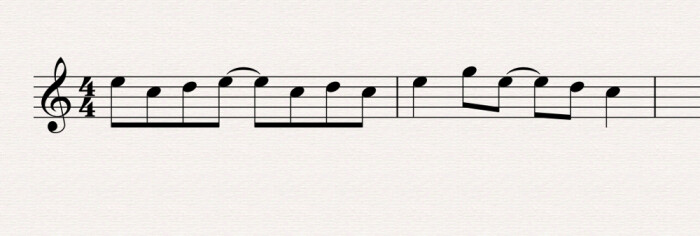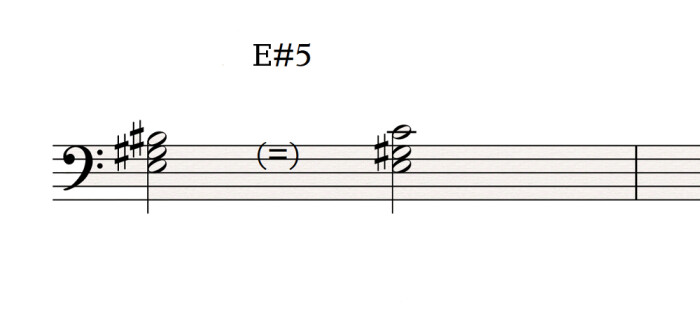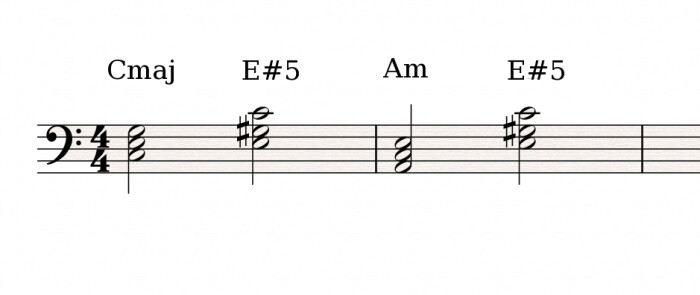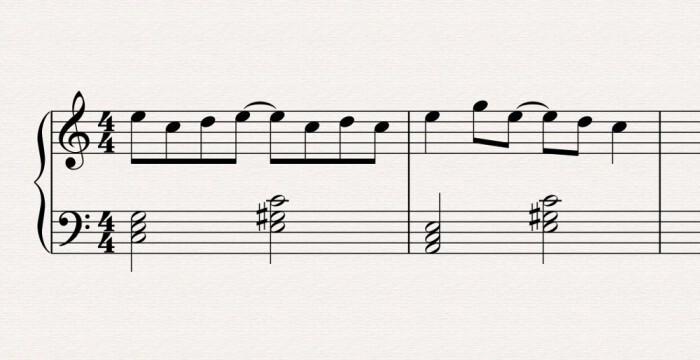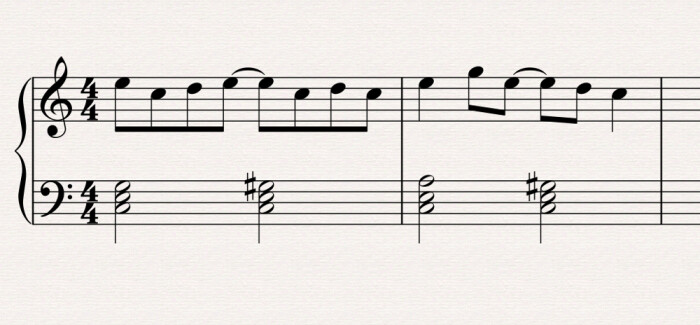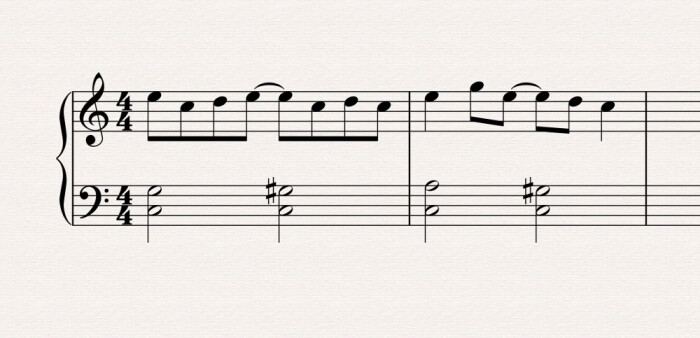In the previous article I introduced you to the concept of voice leading and voicings. Today we'll explore them in detail.

You’ve already seen that classic chords are built by layering thirds (see article 4). And in the previous article you saw that, generally speaking, there are three layers in harmonization: the melodic line, the bass line and the middle voice or voices. Which is very fitting because it can be easily transferred to the chord structure: the highest note of a chord is the melody, the lowest one is the bass and the middle note (or notes for chords that have more than three notes) give color to the harmony.
In the following example you have the simplest chord progression you can imagine, a diatonic progression based on the harmonization of the C major scale:

The three voices progress in parallel, which is completely uninteresting both in musical and harmonic terms. In practice, it could work as a transition – if and only if you are very indulgent, that is.
On the other hand, the following example will show you what you can accomplish with a well-fashioned voice leading. The melody is the following (played with a bit of swing):

The composer then decided to add the following chords: Cmaj, E#5 and Am.


Associated just like that to the melody, the chord progression seems pretty awkward, even if it adds an interesting color. But you can do much better. Let’s begin by defining a bass line! If you look at the chords, it’s easy to see that they all share the C note.
I’ll open a very brief parenthesis here: you might have realized that the E#5 chord can easily become a C#5. That’s the magic of altered chords, like the diminished chords we saw in article 21. Close parenthesis.
Since all the chords share the C wouldn’t it be a good time to introduce a pedal point, as you saw in article 29? Let’s do this!

With this simple trick we’ve established the bass line of the song, which was the main goal, but at the same time the middle voice is more clearly audible, which results in the following melody:

Nice isn’t it?
One last thing: apart from the C, all chords also share the E, which is also present in the melody. This means you have an unnecessary doubling, especially since the E in the bass makes the pedal a bit heavier and muddles the middle voice. Why not do away with this ungracious E?

And voilà, the three voices are clearly overlaid! And guess what? Each harmonized moment of this mini musical theme corresponds to a triad chord used in the appropriate configuration, without using a single additional note. It’s obviously up to you to enrich the chords as you see fit, but the goal of this article was to show you that you can find interesting things with simple chords (granted, I added a #5 but it was only to spice up things a bit).
See you next time to keep exploring the fascinating world of voice leadings!




